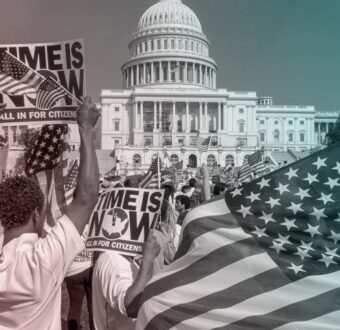Want to Compete with China? Deliver on Climate Security for the Indo-Pacific

By Caroline Baxter and Erin Sikorsky
This article appeared in Just Security on May 21, 2021.
In its interim national security strategy, the Biden administration highlighted the need to “out-compete” China, and argued deterring adversaries and defending U.S. interests will require a “robust” presence in the Indo Pacific. If the administration is serious about competition, then it must deliver on what matters to U.S. regional allies and partners: climate change and climate security.
In a 2021 survey of the Association of Southeast Asian Nations (ASEAN) members’ greatest fears, the threat of climate change outranked the threat of military conflict in the region by almost 10 points. For the Philippines, a crucial U.S. treaty ally in the region, the gap was almost 20 points. Majorities in Japan would rather protect the environment and manage climate change even at the expense of economic growth, and a recent survey by the Institute for Global Affairs found that the single biggest way American democracy would be more attractive to Japan would be if the United States enacted climate change legislation. Public opinion surveys in Australia and South Korea, two other major U.S. allies, have identified climate change as their greatest national security threat. Meanwhile, in a 2020 Pew survey in the United States, nearly the same percentage of Americans named China’s power and influence as a “major threat” (62 percent) as named climate change (60 percent).
The data speaks for itself. In 2020, the Red Cross responded to a record 25 climate-related disasters in the Indo-Pacific. A World Bank study estimated that, without mitigation strategies, climate change will displace 40 million people in South Asia alone. Beyond the human tragedy, this is a significant regional security risk: the steps that some countries have taken to avoid absorbing climate migrants foment conflict. The wall India erected to keep Bangladeshi climate migrants out of Indian territory has led to deadly clashes.
The Biden administration appears to recognize these risks: Leaders from the Indo-Pacific made up a quarter of the attendees of the U.S.-led Leaders Summit on Climate in late April. The climate security panel led by Defense Secretary Lloyd Austin featured the Japanese minister of defense and the secretary of finance for the Philippines. In his remarks, the Japanese minister of defense, Nobuo Kishi, identified a range of climate security concerns for his country, including the strain on Japanese Self Defense Forces from increased extreme weather events and climate-induced mass migration in the region. Now the question is, how does the United States move climate security from the halls of diplomacy into the field?
Read more of Caroline’s and Erin’s article in Just Security.

Written by Caroline Baxter
Caroline is a former research fellow with the Independent America project at the Institute for Global Affairs.

Written by Erin Sikorsky
Erin is director of the Center for Climate and Security and the International Military Council on Climate and Security
Read more from Caroline
This post is part of Independent America, a research project led out by IGA senior fellow Mark Hannah, which seeks to explore how US foreign policy could better be tailored to new global realities and to the preferences of American voters.





